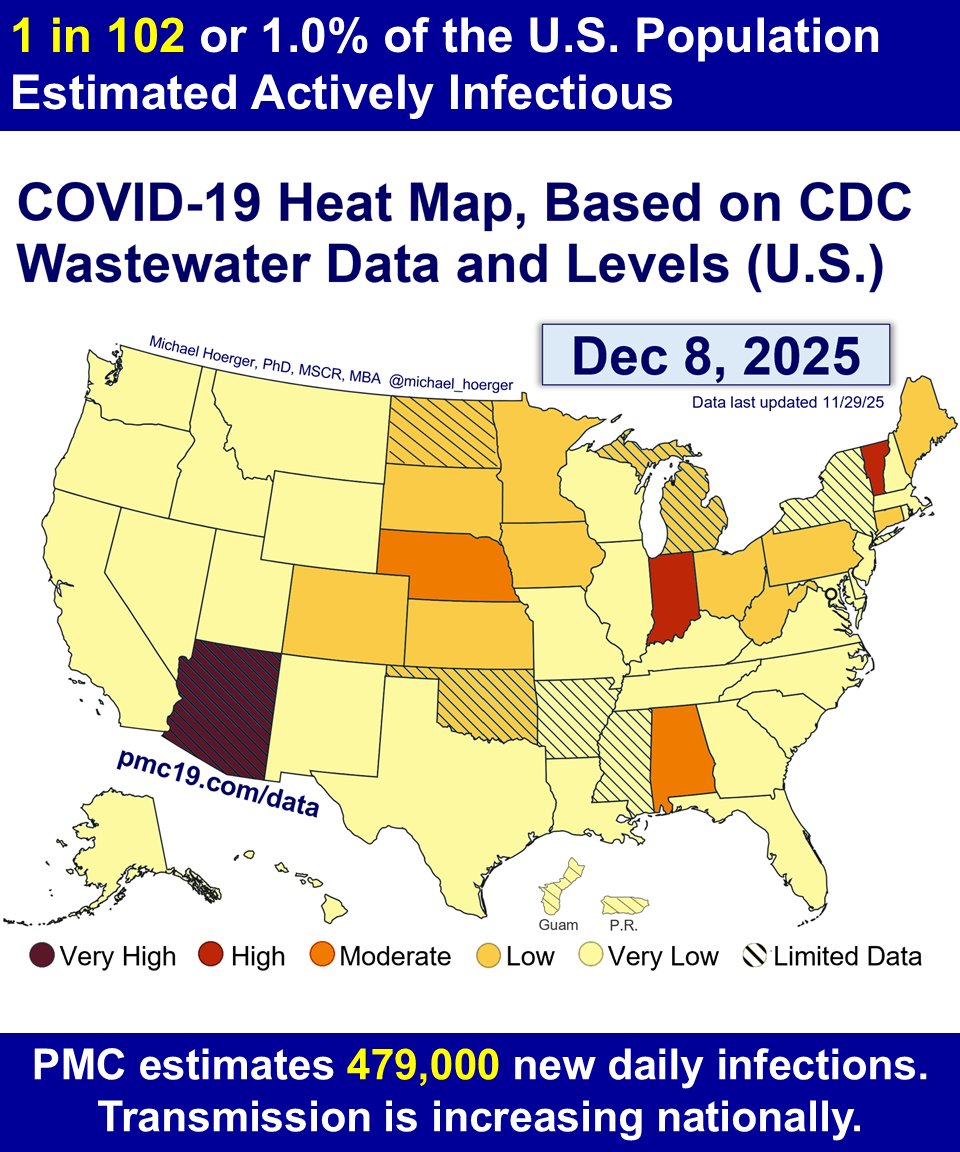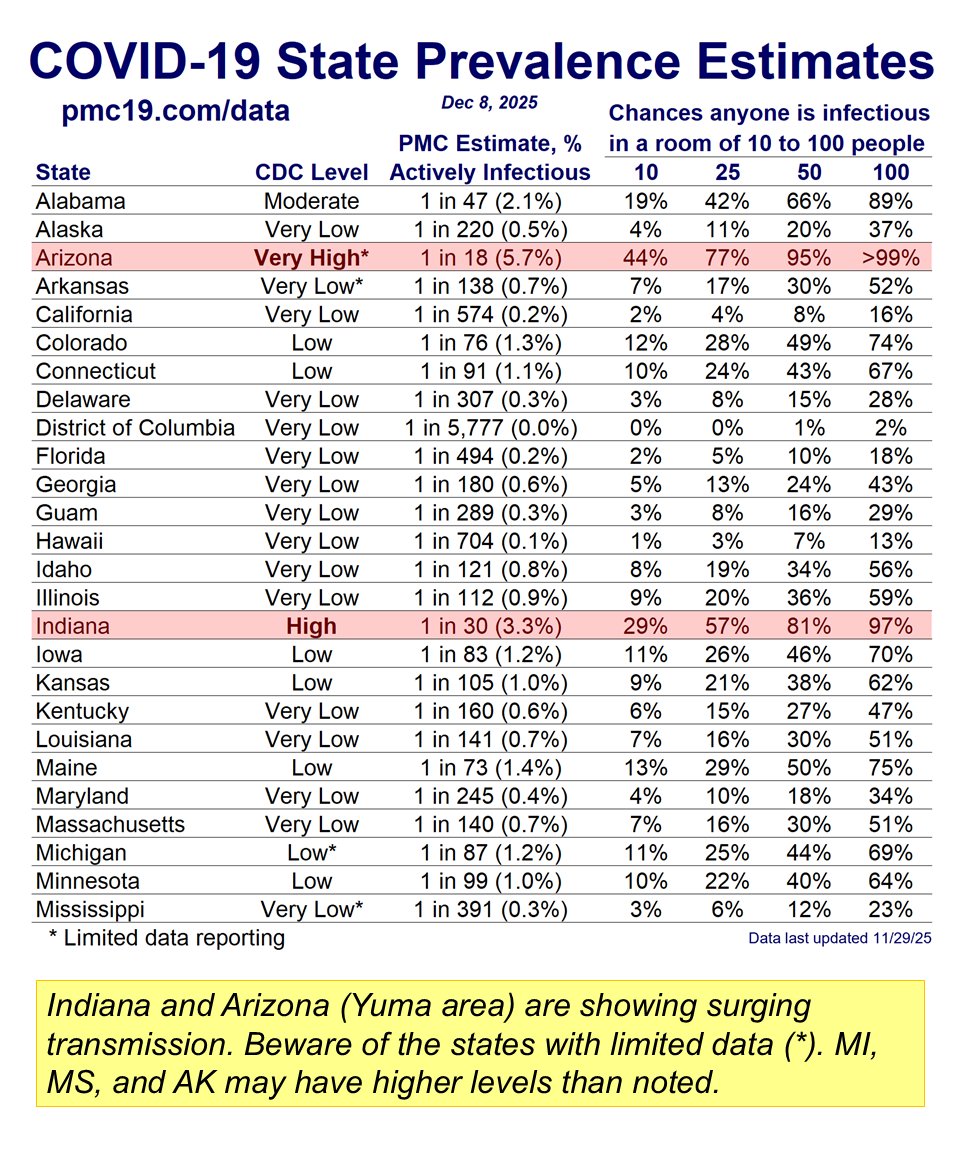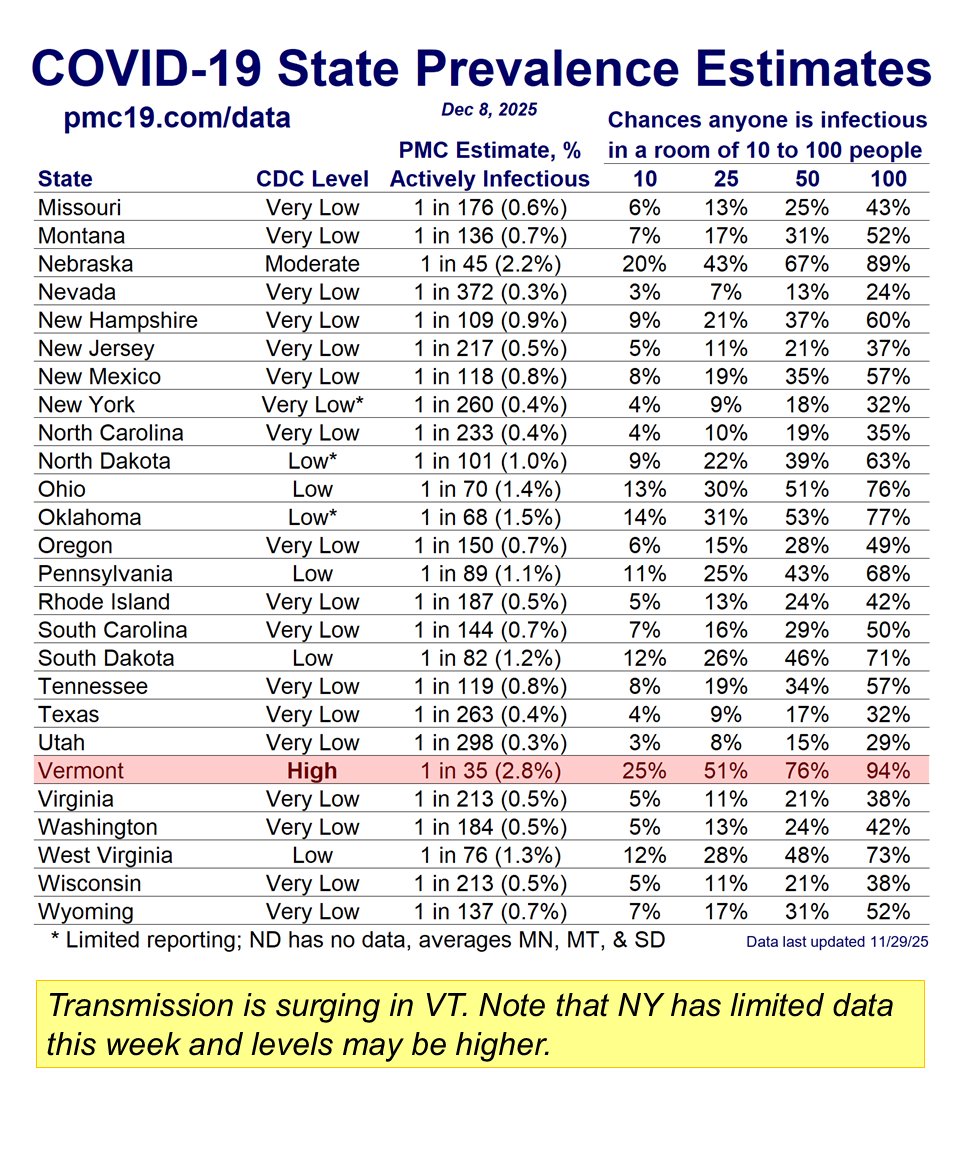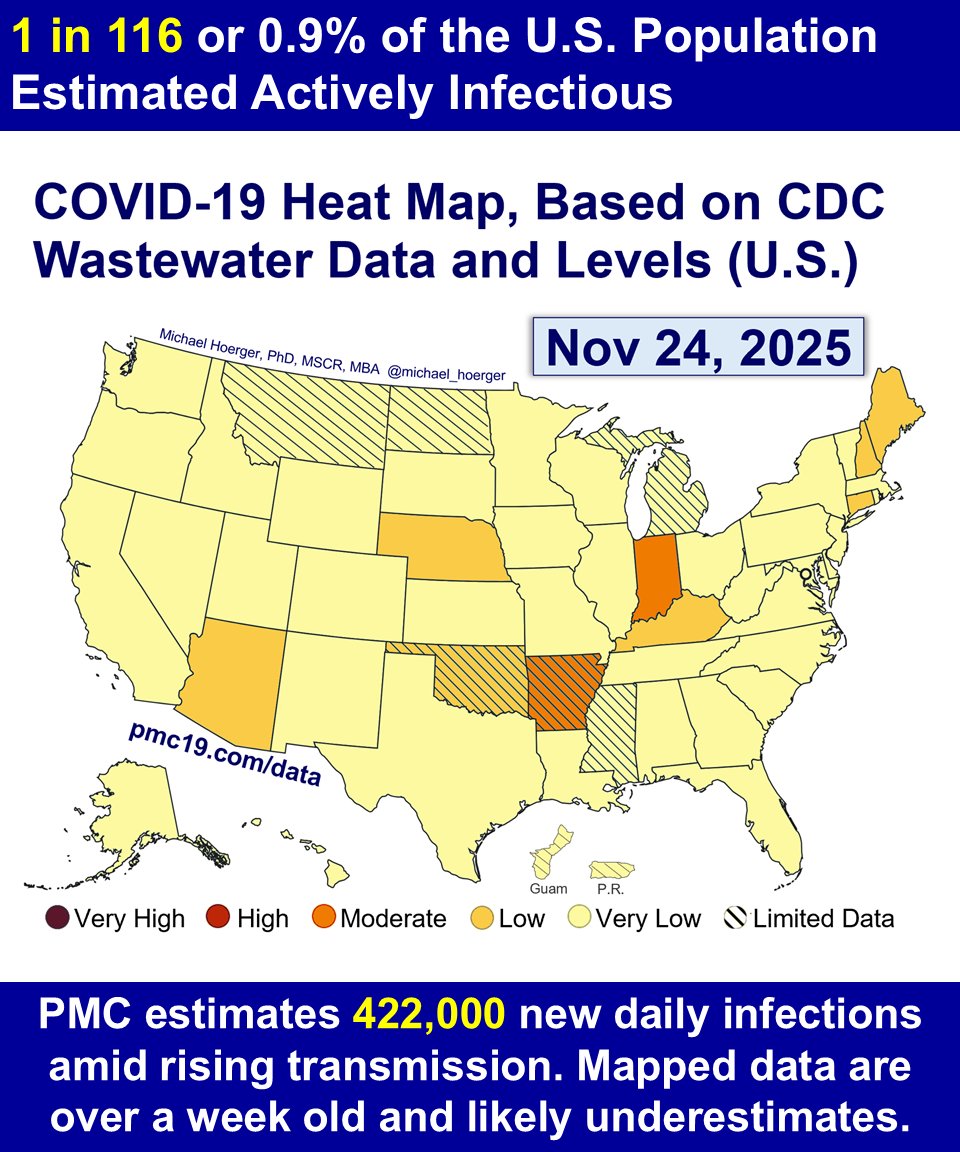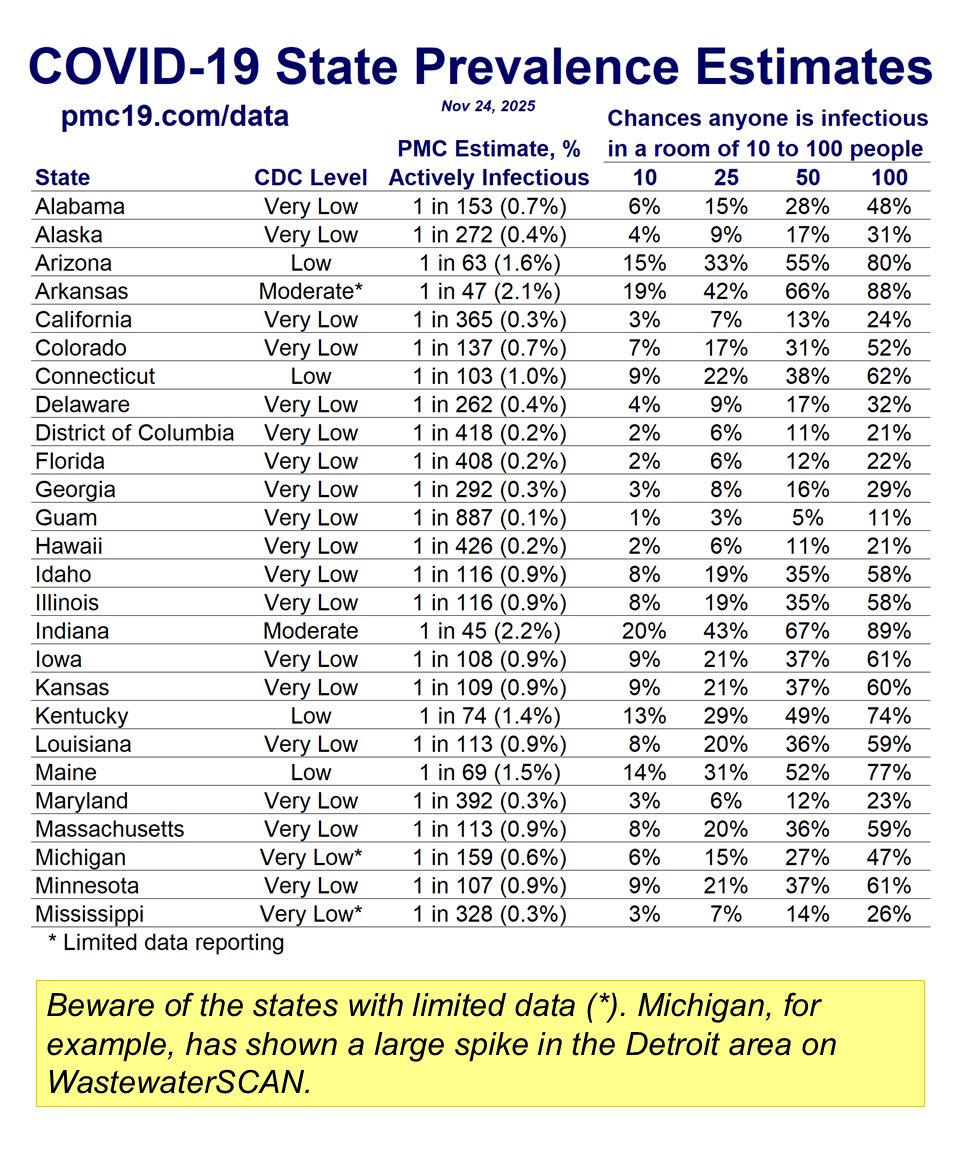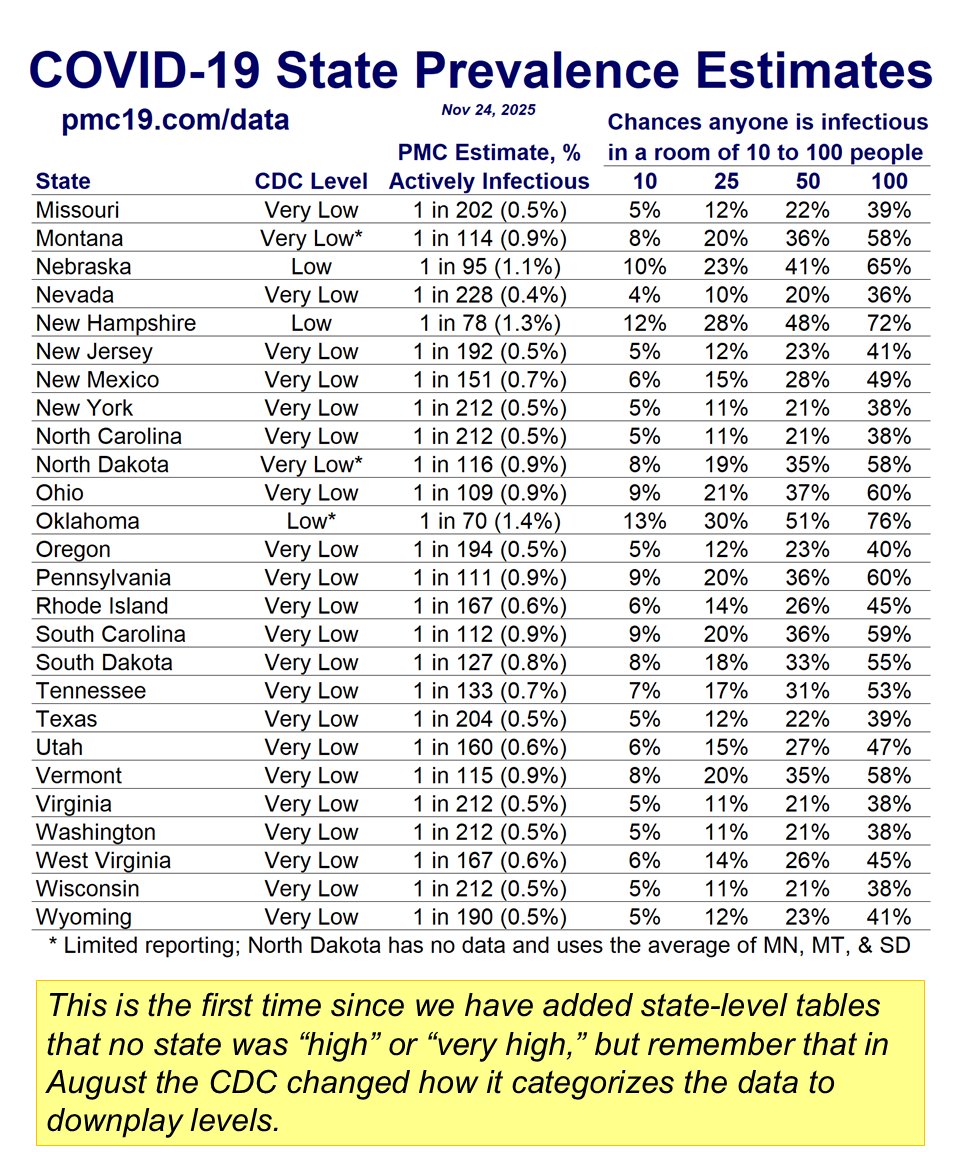1) PMC Dashboard, May 26, 2025 (U.S.)
The lull exit is coming. Despite being in a lull:
🔥1 in 180 actively infectious
🔥1.9 million weekly infections
🔥>93,000 new #LongCOVID cases from the week's infections
🔥1,100 excess deaths from the week's infections
This is a "lull."
The lull exit is coming. Despite being in a lull:
🔥1 in 180 actively infectious
🔥1.9 million weekly infections
🔥>93,000 new #LongCOVID cases from the week's infections
🔥1,100 excess deaths from the week's infections
This is a "lull."
2) PMC Dashboard, May 26, 2025 (U.S.)
The forecast calls for a near-doubling in transmission the next month to 450k daily infections.
The 95% confidence interval includes flat transmission (percolating), or escalating to 650k (if NB.1.8.1 takes off).
The forecast calls for a near-doubling in transmission the next month to 450k daily infections.
The 95% confidence interval includes flat transmission (percolating), or escalating to 650k (if NB.1.8.1 takes off).

3) PMC Dashboard, May 26, 2025 (U.S.)
Looking at year-over-year transmission, 2025 (red) is closely tracking the median (gray).
It transmission accelerates, it could look more like last year (orange). If it slows, more like two years ago (yellow).
Looking at year-over-year transmission, 2025 (red) is closely tracking the median (gray).
It transmission accelerates, it could look more like last year (orange). If it slows, more like two years ago (yellow).

4) PMC Dashboard, May 26, 2025 (U.S.)
Note that we are exiting the relative "lull" following the 10th wave in the U.S.
Let it sink in that this week's lull infections will likely result in about 1,100 deaths. Then, consider the 11th wave on the way.
Note that we are exiting the relative "lull" following the 10th wave in the U.S.
Let it sink in that this week's lull infections will likely result in about 1,100 deaths. Then, consider the 11th wave on the way.

5) PMC Dashboard, May 26, 2025 (U.S.)
The CDC defines the vast majority of the U.S. in "low" or "very low" transmission.
This may be true in relative comparisons, but the excess deaths remain high in an absolute sense.
Monthly Covid excess deaths surpass 9/11.
The CDC defines the vast majority of the U.S. in "low" or "very low" transmission.
This may be true in relative comparisons, but the excess deaths remain high in an absolute sense.
Monthly Covid excess deaths surpass 9/11.

6) PMC Dashboard, May 26, 2025 (U.S.)
Regional data show the lull likely ending with the West already in an apparent uptick.
Regional data show the lull likely ending with the West already in an apparent uptick.
https://x.com/michael_hoerger/status/1926509258280968220
7) PMC Dashboard, May 26, 2025 (U.S.)
Find the full PMC Dashboard at
Use, edit, improve, and share anything posted. Thank you. pmc19.com/data
Find the full PMC Dashboard at
Use, edit, improve, and share anything posted. Thank you. pmc19.com/data

• • •
Missing some Tweet in this thread? You can try to
force a refresh





